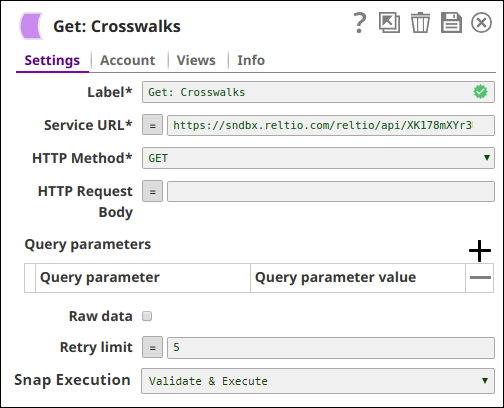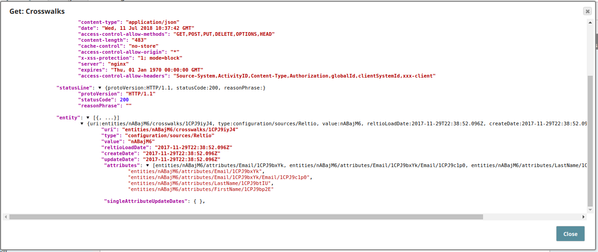Reltio Generic Execute
In this article
Overview
The Reltio Generic Execute Snap allows you to perform Read, Write, Update and Delete operations upon objects in the specified Reltio tenant by executing REST APIs (GET, PUT, POST, and DELETE). The API key that you specify in the Account settings determines the API calls that you can make.
Prerequisites
Reltio account with a valid Tenant ID so that Tenant URL can be formed/API for Account settings. Also, the Reltio account must have appropriate read and write access to create objects in the Tenant.
Support for Ultra Pipelines
Works in Ultra Pipelines.
Limitations and Known Issues
- You cannot roll back the productized Reltio Snap Pack in 4.20 to a prior version.
Snap Input and Output
| Input/Output | Type of View | Number of views | Examples of upstream/downstream Snaps |
|---|---|---|---|
| Input | Document | Min: 0 Max: 1 |
|
| Output | Document | Min: 1 Max: 1 |
|
Snap Settings
| Field | Field Type | Description |
|---|---|---|
| Label* | String | Specify the name for the Snap. Modify this to be more specific, especially if there are more than one of the same Snap in the Pipeline. |
| Service URL* | String | Specify the service URL in the format: . The format to be followed:
Default Value: {tenantUrl}/{serviceUri} |
| HTTP Method* | Dropdown list | Select the type of HTTP request.
Default Value: Get |
| HTTP Request Body | String | Specify the HTTP body of the request. Relevant to post request. You can provide this value dynamically as a Pipeline parameter and upstream parameter or directly in the Snap. Default Value: [None] |
| Query parameters | Use this field set to define query parameters and their values. The query parameters are attached to the URL using the HTTP query parameter syntax, separated by & and added as 'key=value'. You can provide the parameters dynamically as Pipeline parameters or directly in the Snap, but not as upstream values. | |
| Query parameter | String | Specify the name of the query parameter to pass in the API. Default Value: [None] |
| Query parameter value | String | Specify the value for the specified query parameter. Default Value: [None] |
Raw data | Checkbox | Select this checkbox to write the HTTP response content to the output view as it is. If you deselect this checkbox, the data is parsed according to content type. Default Value: Deselected |
| Empty Responses as Separate Documents | Checkbox | Select this checkbox to write all responses into separate output documents in the same order as they appear in the request body. Deselect this checkbox to group all empty responses into one output document. When you fetch multiple entities with POST {TenantURL}/entities/_byUris, the non-existing entities result in empty-string responses. Default Value: Deselected |
| Retry limit | Integer | Specify the maximum number of attempts to get the response. Default Value: 5 |
Snap Execution | Dropdown list | Select one of the three modes in which the Snap executes. Available options are:
|
Troubleshooting
Error | Reason | Resolution |
|---|---|---|
When you configure the Reltio OAuth2 Account for the Reltio Generic Execute Snap, it fails due to invalid input.
| The user does not have a valid email ID to export data. | To resolve this issue, specify an email parameter in the Query parameters and retry the execution. The pipeline should run successfully. |
Examples
GET
The Pipelines below demonstrates how the Reltio Generic Execute Snap can be used to read Reltio objects and Crosswalks. Based on the Snap's configuration you can either read one or all objects of a type. All four pipelines are included in one file and can be downloaded from the Downloads section below.
Downloads
Important steps to successfully reuse Pipelines
- Download and import the pipeline into the SnapLogic application.
- Configure Snap accounts as applicable.
- Provide pipeline parameters as applicable.
Snap Pack History
Have feedback? Email documentation@snaplogic.com | Ask a question in the SnapLogic Community
© 2017-2025 SnapLogic, Inc.


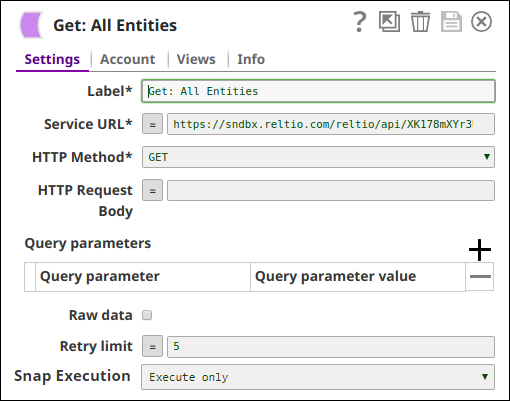
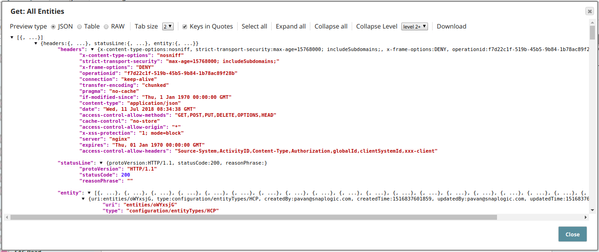

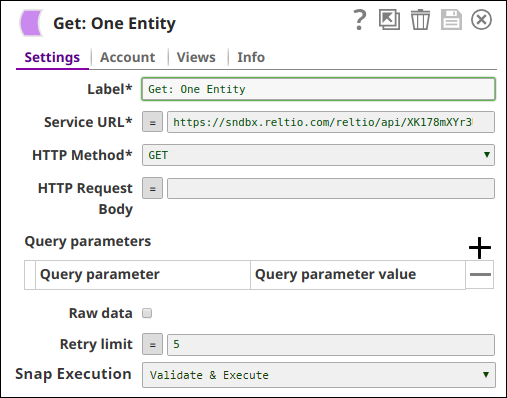
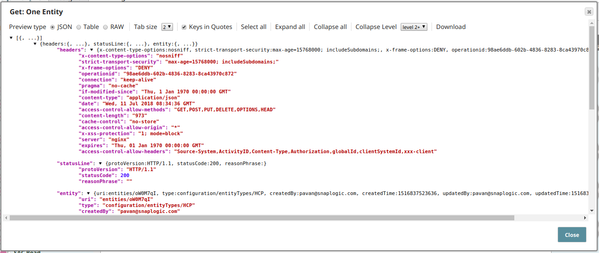
_GET_%20One%20Entity_Pipeline.png?version=1&modificationDate=1532098968645&cacheVersion=1&api=v2)
_GET_%20One%20Entity_Pipeline%20Properties.png?version=1&modificationDate=1532098967566&cacheVersion=1&api=v2&width=600&height=432)
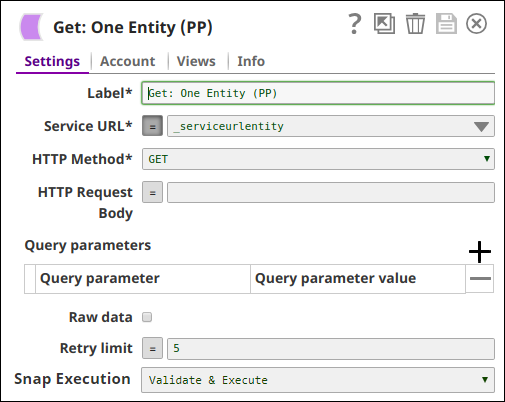
_GET_%20One%20Entity_RGE%20Snap_Output.png?version=1&modificationDate=1532098965484&cacheVersion=1&api=v2&width=600&height=252)

